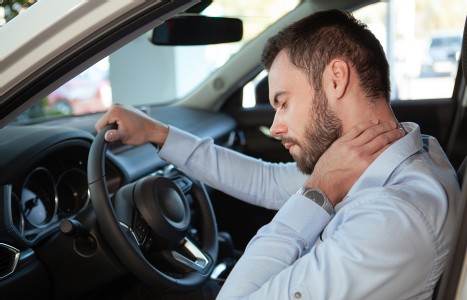Because they have yet to pass national legislation protecting the chiropractic profession, Japanese DCs are in a similar situation that U.S. DCs faced. We were fortunate enough to be able to pass chiropractic licensure state by state. The DCs in Japan must accomplish this nationally, which has proved to be an extremely difficult task. And in spite of their efforts, Japanese DCs are currently faced with two chiropractic professions.
Sports Biomechanics, Neuromuscular Disadvantage and Myofascial Pain and Dysfunction in Athletes, Part II
Using a sports technique whose quality of motion fails to respect the body's neuromuscular design, results in suboptimal performance and an increased risk of overuse injury. According to Travell and Simons8, myofascial trigger points can be caused by the following factors: acute overload, overwork fatigue, direct trauma, and chilling. All of these factors appear in sports. Of particular interest to this discussion is what Travell and Simons8 call "overwork fatigue" and its similarity to what Garrick and Webb2 and Booher and Thibodeau1 refer to as "chronic overuse" in the production of common, nontraumatic injuries in sports. These ideas are one and the same.
The face of athletic injury assessment must change to include a comprehensive screening for myofascial trigger points. In sports, trigger points are commonly caused by the improper application of biomechanical and neuromuscular principles to skills and techniques. The repetitive and unmonitored use of such sports techniques results in poor performance and myofascial injury. Such performance barriers and injuries need not be mysterious in either their etiology or management. The technology exists ferret out a logical explanation for poor performance among athletes, their "overuse" injuries and proper management.
Neuromuscular principles to keep in mind when analyzing and designing a sports technique consist of respecting the inborn spinal cord reflexes and the length-tension relationship of muscle. Respect for these neuromuscular laws add grace, fluidity and power to sports movements. In effect, such movements are healthy and contribute to reducing the risk of sports injury.
Sound neuromuscular sports techniques require that the myotatic reflex be efficiently used. Most sports techniques can be broken down into several phases or steps. Typically, these are prepatory, execution and recovery phases. The preparatory phase of sports techniques prepares the muscles for forceful contraction. In the instance of the batter swinging the bat, the forward stride and hip rotation prepare the latissimus dorsi for forceful contraction. This is done by quickly stretching the latissimus dorsi and activating its myotatic reflex. The muscle contracts forcefully and fluidly (Dare I say, the way nature intended?). It is important to point out that it is the rate (quality) of the stretch and not the length (quantity) of stretch that's significant.
The other spinal cord reflex that needs to be respected is the crossed extensor reflex. This reflex facilitates one limb to retract reflexively or flex as its counterpart is extended. This reflex is essentially the same as the walking or crawling reflex and it adds grace and power to athletic movements. The crossed extensor reflex is at work throughout the performance of a skill from preparation to recovery.
During the preparation phase of right-handed batting, the right arm is "cocked" back in a retracted or flexed position while the left arm is extended. During execution, the right arm gradually extends while the left arm is gradually retracted or flexed. And, during the recovery phase, the arms assume a mirror image of its starting position; right arm extended, left arm retracted. This, for the enlightened batter, means a forceful, fluid swing that is quick.
The last neuromuscular law to consider for sports techniques is the length-tension relationship of muscle. The length-tension relationship states that the "range of peak tension is slightly greater" than the resting length of the muscle10." If the muscle is "overstretched," then it loses its ability to generate tension. If the muscle is not stretched enough, then it also loses its potential to generate tension. The key is to find the optimal length of stretch for each muscle during the preparatory phase of each particular sports technique. This neuromuscular principle relates to the position, alignment and degree of overlapping of the actin and myosin filaments in the muscle. A muscle that is in a state of active insufficiency has its actin and myosin filaments completely overlapping7. A muscle that is in a state of passive insufficiency has its actin and myosin filaments without any overlap7.
Smolders11 describes the pathogenesis and perpetuation of myofascial trigger points in terms of tearing of the sarcoplasmic reticulum. The torn sarcoplasmic reticulum leads to failure of the ATP-depended calcium pump, ischemia and local ATP depletion. This model is consistent with violation of the neuromuscular laws of sports techniques. When a muscle is stretched to the point of passive insufficiency, forces that further stretch the series elastic components could very well result in tearing of the sarcoplasmic reticulum. For the athlete, this sets the stage for myofascial barriers to the athlete's peak performance.
Treatment of myofascial barriers to peak athletic performance follows those recommendations of Travell and Simons8 and Smolders11. In addition, a qualitative biomechanical analysis should be made of the athlete's technique that violates sound neuromuscular principles should be corrected.
It would behoove the chiropractic community to further investigate sport in this light. As major universities in this country and around the world study the biomechanics of sports techniques, chiropractors should research and teach the contributions of sound neuromuscular principles to sports performance. Chiropractic possesses the skills, knowledge and understanding to offer the sports community much more than it presently has. Chiropractors should begin to pursue special knowledge in sports performance and sports biomechanics. The world of sports and its deserving athletes are awaiting our assistance.
References
- Booher JM, Thibodeau GA: Athletic Injury Assessment. 2nd ed. Times/Mirror, St. Louis, 1989.
- Garrick JG, Webb DD: Sports Injuries: Diagnosis and Management. W.B. Saunders Co., Philadelphia, 1990.
- Klafs CE, Arnheim DD: Modern Principles of Athletic Training. 5th ed. Mosby Co., St. Louis, 1981.
- Hay JG, Reid JG: The Anatomical and Mechanical Bases of Human Motion. Prentice-Hall, Englewood Cliffs, 1982.
- Brancazio PJ: SportsScience: Physical Laws and Optimum Performance. Simon and Schuster, New York, 1984.
- Hay JG: The Biomechanics of Sports Techniques. 3rd ed. Prentice-Hall, Englewood Cliffs, 1985.
- Norkin CC, Levangie PK: Joint Structure and Function: A Comprehensive Analysis. F.A. Davis Co., Philadelphia, 1983.
- Travell JG, Simons DG: Myofascial Pain and Dysfunction: The Trigger Point Manual, Vol. I. Williams and Wilkins, Baltimore, 1983.
- Warfel J.H: The Extremities: Muscles and Motor Points. 5th ed. Lea & Febiger, Philadelphia, 1985.
- Fox EL, Bowers RW, Foss ML: The Physiological Basis of Physical Education and Athletics. 4th ed. W.C. Brown Publishers, Dubuque, 1989.
- Smolders JJ: Myofascial pain and dysfunction syndromes. In: Hammer WI, ed. Functional Soft Tissue Examination and Treatment by Manual Methods: The Extremities. Gaithersburg, 1991.
Andrew S. Bonci, D.C.
Tuckahoe, New York


